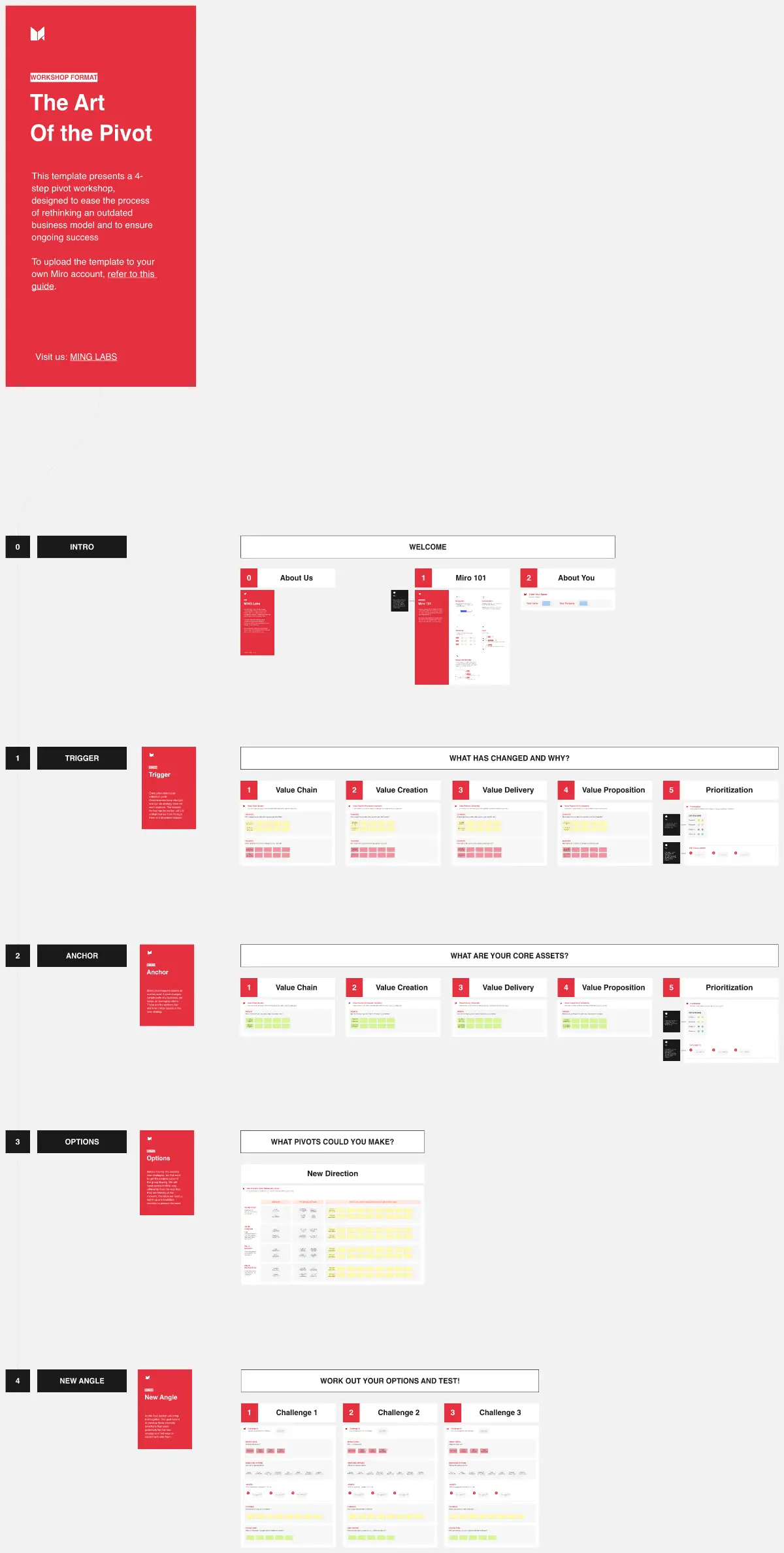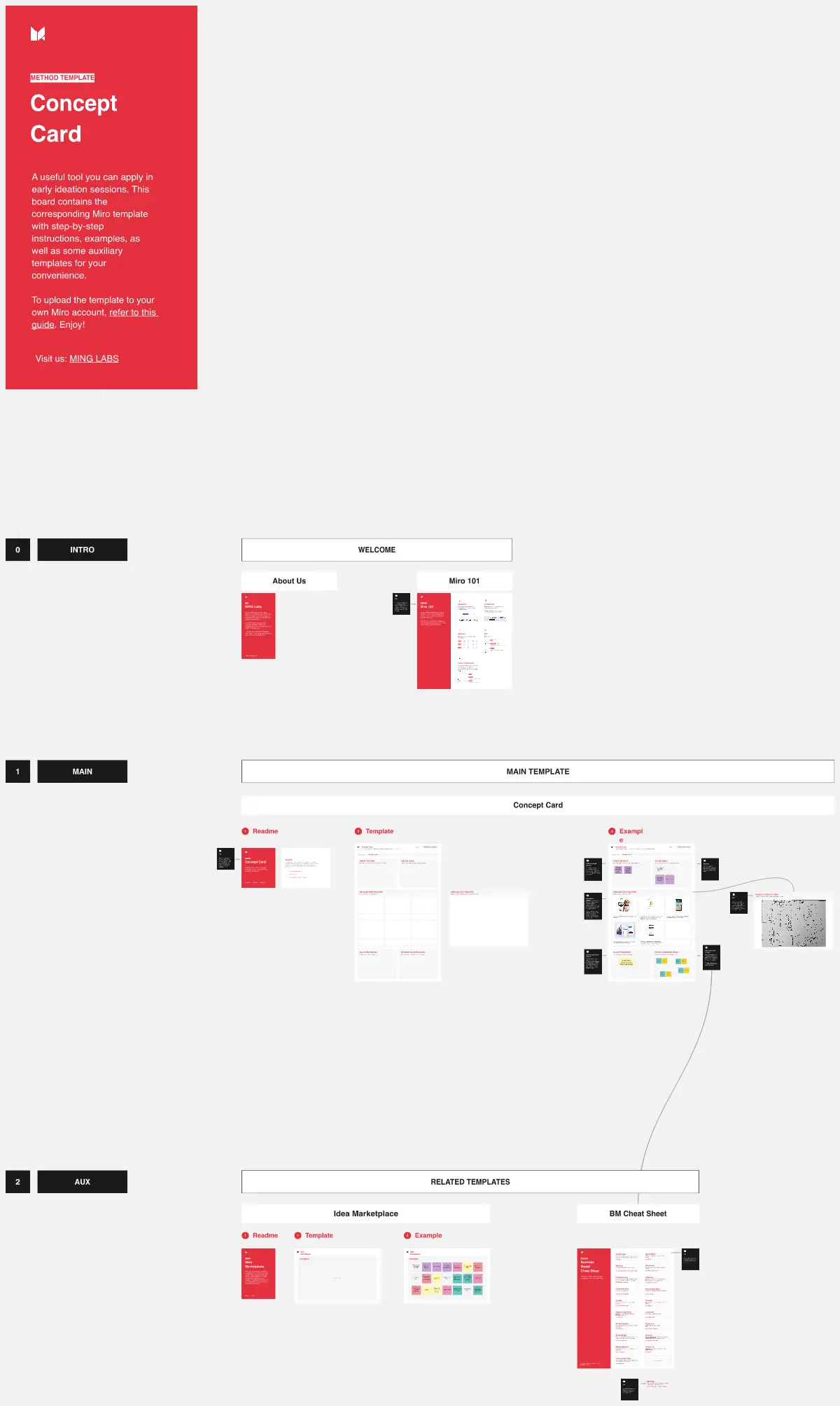Design Principles
The Design Principles template presents a 5-step framework designed to ease the process of creating or rethinking your company's guiding Design Principles in order to create products true to your brand.
The Design Principles workshop is designed to help a group working in different functions towards the same end to align on appropriate guiding principles for their design work and digital products. Design principles are essential articulations of guiding considerations that will help the team make important decisions along their journey and reflect the organization’s vision and values. This workshop will help you find the principles that actually matter to your organization and that should be guiding your team.
The agenda for a 2 hour session looks like this:
10 Min Introductions & Icebreaker + Session Objective
10 Min Impulse Presentation (“Design Principles — What, Why and How?”)
25 Min Keywording (Brainstorming — 10 Min; Presentation — 15 Min)
10 Min Prioritization (Clustering — 5 Min; Reflection — 3 Min; Dot Voting — 2 Min)
10 Min BREAK
25 Min Mind Mapping (Brainstorming — 10 Min; Presentation — 15 Min)
5 Min Prioritization (Reflection — 3 Min; Dot Voting — 2 Min)
20 Min Top 5 Formulation
5 Min Wrap-Up & Next Steps
Key Activities:
Design Principles Presentation - Explain what design principles are and why they are essential to your organization. Show the need for more governance and guidance based on current problems to derive design principles as one of the aspects that need to be put in place. It helps to refer to examples from more mature product organizations to make it tangible.
Keywording & Prioritization - Every participant brainstorms relevant guiding principles that are directly related to the organization and to the products it manages. The Inspiration Box can be useful for references. Following this, everyone presents and explains their keywords. The facilitator finalizes the clustering to ensure that keyword clusters speak to the same overarching design principle. Following that, each participant reflects on which keywords best represent what the organization wants to achieve. Afterwards, participants get 5 dot votes to select the keywords they see as most relevant. The Top 5 keywords with the most votes make it into the next exercise.
Mind Mapping & Prioritization - The Mind Mapping exercise explores what the Top 5 keywords mean for the organization. Here, two branch templates are provided where each keyword becomes the core, and the phrasing of it becomes the branch. One template reflects the internal perspective (“As a user, I should …”) and one the external perspective (“Our designs should …”). Participants brainstorm and write down different phrasings of the various keywords, often revealing slight differences in its interpretation. Afterwards, everyone presents and explains their phrasings. Following this, participants again take time for contemplation and dot voting (10 votes per person). All phrasings that received votes will move into the final exercise
Top 5 Formulation - Move all the aligned phrases into a cluster next to their responding principle and formulate them in 1–2 sentences. Typically, each principle is assigned to 1–2 members in the session to come up with a formulation, then rotate to review and edit. In the end, the group has produced the draft formulations for the Top 5 selected design principles, based on nuanced phrasings.
Categories
Similar templates




